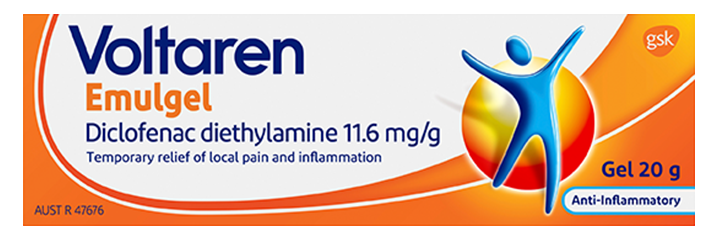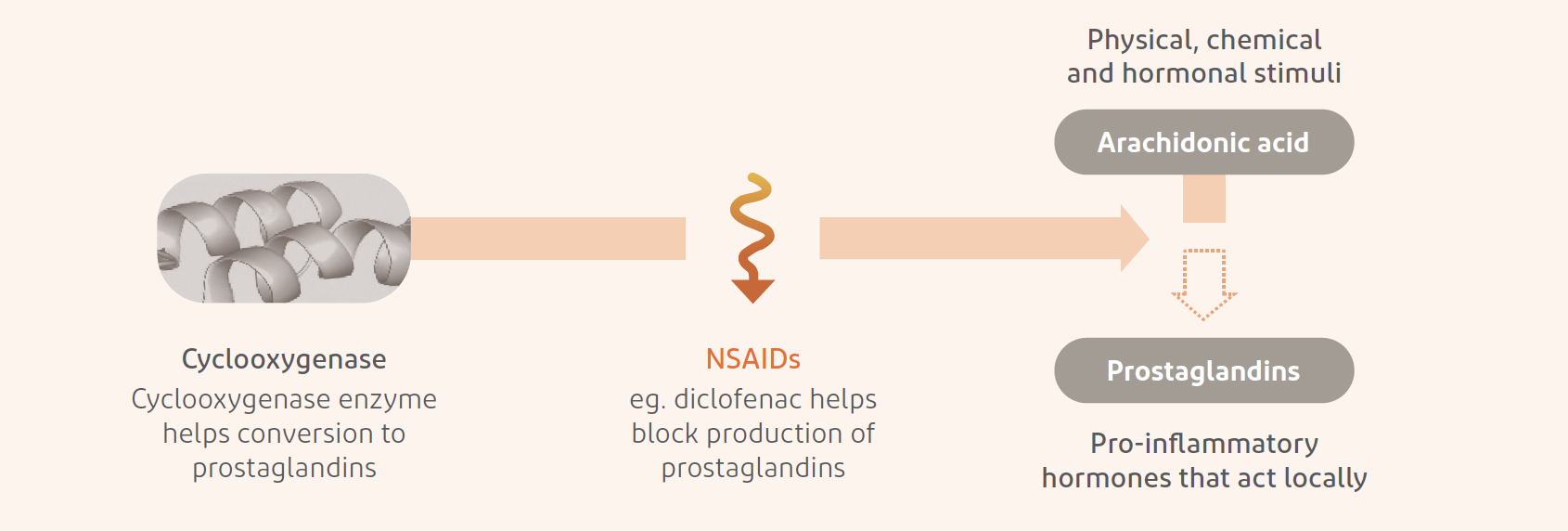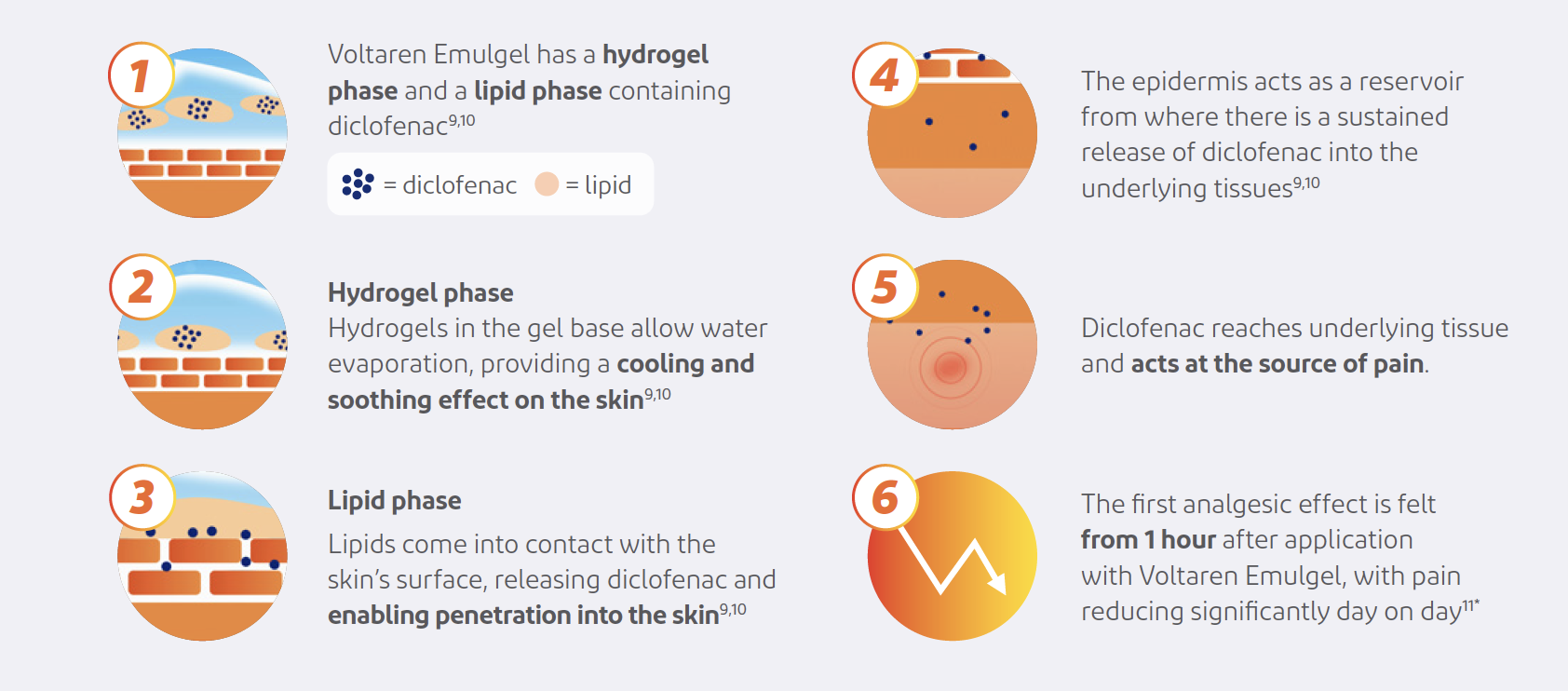

PHYSIO'S, RECEIVE YOUR FREE SAMPLES!
MUSCULOSKELETAL PAIN & INFLAMMATION
Acute inflammation
Inflammation is a protective response of the body that aims to repair and return damaged tissue to health. Acute pain and inflammation occurs immediately following an injury or surgery and typically lasts a few days. The 5 classic signs of inflammation in muscles are heat, redness, swelling, pain and loss of function to some degree.1
What happens at the cellular level?
Damage to tissue triggers chemical processes that result in enzymes called cyclooxygenase facilitating the conversion of arachidonic acid to pro-inflammatory hormones called prostaglandins. These prostaglandin hormones act locally, causing tissue to become inflamed and painful.2
How can NSAIDs help reduce inflammation?
Most NSAIDs (non-steroidal anti-inflammatory drugs) inhibit or block the activity of cyclooxygenase enzymes, which results in reducing the production of prostaglandins – and therefore inflammation.2

Please complete all fields below to receieve your FREE Samples.
When is a topical NSAIDs useful in the physiotherapy setting?
A topical non steroidal anti-inflammatory (NSAID) gel can support your management of inflammation associated with musculoskeletal conditions.3 These include muscle pain or soft tissue injury, such as a minor sports injury related to tendons, ligaments or tennis elbow.
Soft tissue injuries include:

How does a topical NSAID work?
A topical NSAID, when applied to the skin, targets the inflamed area. The active ingredient (such as diclofenac) penetrates the skin to reach underlying tissue and provide relief of pain and inflammation. It works differently from heat or cooling rubs, which contain ingredients that stimulate nerves in the skin to provide a heating or cooling sensation, but do not act to reduce inflammation.
Different topical NSAIDs work in a similar way, but can vary in the degree of penetration of the active ingredient and in the efficacy of the NSAID itself. For example, Voltaren Emulgel contains the NSAID diclofenac in the form of an emulsion gel. The emulgel technology helps the gel penetrate deeply into the skin to enhance delivery of diclofenac to the point of pain.


- Areas for use of Voltaren Emulgel include the muscles of the back and neck, sprains, tendonitis and bursitis.12
- Voltaren Osteo Gel 12 Hourly, with a higher diclofenac content for less frequent application, is available for patients with mild osteoarthritis of the knees and fingers.13
Visit the Haleon Health Partner Portal for access to resources and to view our webinar on 'Sports injuries and acute inflammatory pain' webinar. Click here to access the portal.

